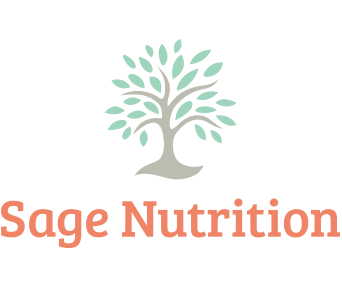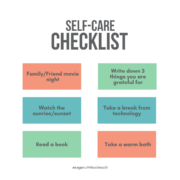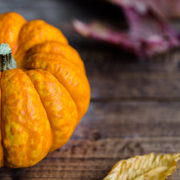National Eating Disorders Awareness Week
It’s not a phase or lifestyle choice, eating disorders are real health conditions that impact people for life. According to the National Eating Disorder Association, twenty million women and ten million men in the United States suffer from a clinically significant eating disorder at some point in their life. Eating disorders impact mental and physical health and affect people of every race, gender, and culture. Unfortunately, only one in ten people who suffer from eating disorders receive treatment. Going untreated can lead to life long side effects like heart and gallbladder disease in binge eating disorder patients and muscle and hair loss in anorexia nervosa patients. Eating disorders have the highest mortality rate of any mental illness, with one person in the US dying as a result every 62 minutes. However, patients should never lose hope because recovery is possible.
Often times you may not even know if someone around you is battling an eating disorder. A few signs to look for are: social media posts only relating to weight and exercise, dramatic weight loss in a short period of time, obsession with counting calories, obsession with exercise, low self-esteem, insomnia, hair loss, and vague or secretive eating habits. While everyone’s road to recovery is unique, seeking professional help is vital. Asking for help can be intimidating, but there are ways to help someone you care about. Reaching out in private is a great first step. Most people don’t want to discuss their health struggles in public, so make sure it’s a comfortable and private setting. Never make assumptions or blame the person who is struggling, instead observe, ask, and listen. Offering to go to an appointment with them, sending texts of encouragement, and letting them know just how much you care are all beneficial. Lastly, set a positive example. Give compliments on things other than appearances and don’t participate in negative body talk. Weight and appearance do not define self-worth. If you have questions about eating disorders or would like to make an appointment the professionals at Sage Nutrition are ready to help.
What is Mindful Movement?
How I define mindful movement is an activity and/or exercise performed with awareness. It is putting your attention and focus on noticing and feeling what your body does while engaging in movement. It is a mental focus and practice of being aware of our entire body. Mindful movement allows us to recognize the capability and potential of our bodies.
Mindful movement is listening to your body to create an awareness of your body. It involves finding something about your body to enjoy. This could be as simple as paying attention to the feel of your feet on the floor or as complex as how you sit down and lean in a chair, holding onto a mouse. It could be taking the dog for a walk and focusing on how deeply you breathe and if it is through your nose or mouth. It is fully finding an appreciation of how truly amazing your body is while allowing your mind to connect to your body.
Activities that are both structured and unstructured can be considered mindful movement. Some of the structured activities include: yoga, pilates, strength training, stretching. Unstructured activities may include: freestyle dance, singing in the car, games with children, gardening, and playing with pets.
If you would like to learn more about mindful movement and how you may benefit from exploring this unique approach, give Cathy a call to schedule a session at Sage Nutrition.
Written By: Cathy Jewell, Mindful Movement Coach
Surviving Thanksgiving
Thanksgiving. A word that brings anticipation and excitement to the ears of millions Americans across the country, rings thoughts of anxiety in my head.
“How on Earth will I possibly be around my family, friends, and FOOD, with enough control to not gain 15 pounds! Aunt Deb is bound to bring pumpkin pie. I know my family will be watching to make sure I eat appropriately according to their expectations.”
Those are all thoughts that, years ago, would have been swirling around in my head days, even weeks leading up to the fourth Thursday of November. But not anymore. You see, it took eight years of mental healing for me to feel comfortable about attending a holiday family gathering that involved food. Thanksgiving might possibly be the most anxiety-ridden holiday of the year for those who struggle with food, for the simple purpose of that it revolves, almost entirely, around food. It’s custom and even appropriate for people to stuff themselves silly, and if you are the only person in the room known to have a less than optimal relationship with food, it can feel like all eyes are on you. For someone who is challenged by eating in social situations, this can cause even more anxiety added onto the meal alone. So, in preparation for what should be a wonderful day with family and friends, I’ve put together a Thanksgiving Day Tip Guide for how to approach this time with as little stress as possible.
- Do not under eat before the meal, in order to “save calories” for the big day. This can cause you to feel so hungry, that you actually end up over eating at the meal.
- Do not avoid foods you really enjoy because they are deemed “unhealthy.” Every food on the planet provides energy in the form of calories. Your body NEEDS (not wants) calories. You should feel zero guilt by enjoying pumpkin pie, mashed potatoes, turkey, and any other food you want for your Thanksgiving meal. These foods, along with every food offered at your Thanksgiving, has calories in the form of protein, carbohydrates, and fat that your body needs.
- Eat until you are full. This can be a challenging concept for those who have struggled with food in the past. I have been challenged by this as well. After dieting for so long, I forgot what it feels like to feel full vs. stuffed. Sometimes, your body will feel full after about ten minutes following your meal. My advice? Eat the food you initially chose for yourself, and if ten minutes after your meal, you still feel hungry? Enjoy some more food!
- Lastly, Life is more than food. It is more than counting every calorie and macro-nutrient on Thanksgiving to avoid feeling guilt. Enjoy this time with your loved ones. Life is short, and we all too often forget that. This one day of eating intuitively will not ruin any goal or progress you have made for yourself in regards to your relationship with food. So, take a breath, laugh, tell stories, eat good food, and count your blessings! :
Cook with Your Kids This Thanksgiving
Preparing any holiday meal is certainly a big task, but it doesn’t have to be a one-person job. Get your kids involved! Many parents fear children in the kitchen with hot stoves and sharp knives but following a few simple steps to keep things safe will allow kids to earn the many benefits of preparing a meal.
Let children be a part of the process from the very beginning. When shopping for ingredients explain what dish each ingredient will be apart of and have them help in picking out produce. Seeing the variety of colors and textures in the store will make them interested in trying new foods and ready to help prepare your holiday meal.
When it comes time to start cooking, establish some kitchen rules; only use a knife if someone is helping you, if you spill something clean it up, don’t touch the hot stove. Remind children to wash their hands and if they have long hair, put it up. Having children read a recipe will help with their comprehension and communication skills. Cooking is a science, reading a recipe teaches the importance of following directions and staying on task. When it comes time to measure things, doubling a recipe is an easy way to teach some basic math skills. My favorite part of measuring ingredients as a kid meant getting to stir everything together afterwards! Kids of any age can help with washing vegetables and sorting ingredients. This is also a great time to get kids excited about healthy choices. Remind kids there are endless types of vegetables, eating them will make you strong and help your brain develop. If you have older children, demonstrate how to properly use a knife so they can chop vegetables. When it gets closer to meal time, tasks like counting the number of forks needed and transferring food into serving dishes is also kid friendly.
If you’ve never cooked with your kids before it can certainly be daunting. But start with small tasks and be patient. Some of my fondest memories are cooking with my mom and I’m sure she would say the same. It allowed us to bond on even the busiest weeknights. Cooking is a vital life skill and the earlier kids start learning the better. Remember to thank children for their help and enjoy the meal they helped create.






